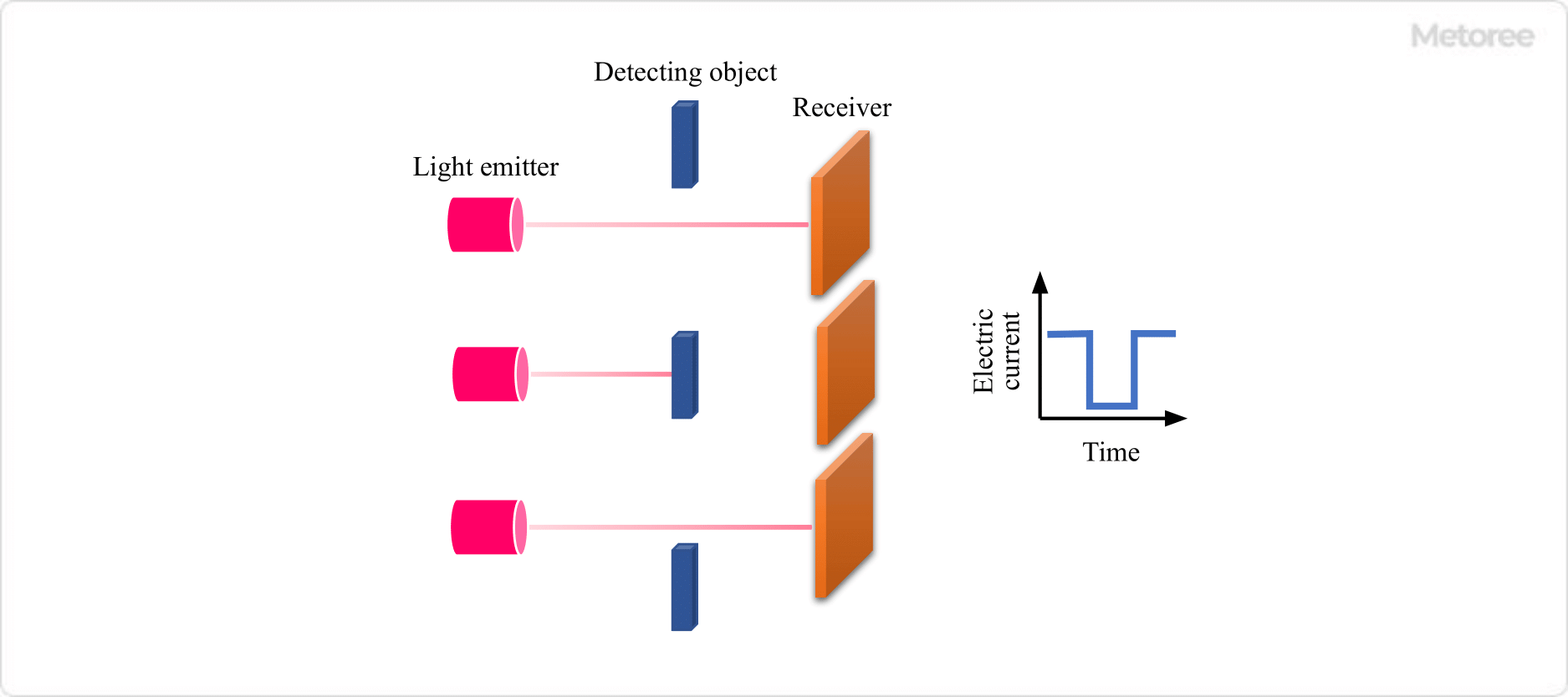What Is a Photointerrupter?

Photointerrupters are devices that detect the presence, absence, or position of an object using a light-emitter and receiver. They are classified into transmissive and reflective types. Transmissive photointerrupters work by blocking light between the emitter and receiver, while reflective photointerrupters detect light reflected off an object back to the detector.
Though both are used in various devices, this discussion focuses on transmissive photointerrupters, where the emitter and receiver are positioned opposite each other within a single package.
Uses of Photointerrupters
Employed across automotive, food, semiconductor, and other industries, photointerrupters serve various functions, including:
- Measuring lens ejection and aperture diameter in digital cameras.
- Detecting the timing of photosensitive drums and paper passage in photocopiers.
- Monitoring print head position and paper flow in printers.
- Tracking human movement in automatic ticket gates.
- Validating banknote passage in vending machines.
Principle of Photointerrupters

Comprising a near-infrared LED emitter and a phototransistor detector, photointerrupters operate by continuously projecting light from the emitter to the detector. The interruption of this light path by an object decreases the phototransistor’s collector current, which is then processed to signal the object’s detection.
Integrated types align the optical axes during manufacturing, eliminating the need for post-installation adjustments. Conversely, separate types require precise alignment of the emitter and detector at setup.
Other Information on Photointerrupters
Precautions for Using Photointerrupters
Considerations include:
- Detecting highly transparent objects may be challenging due to their light transmission properties.
- Small objects might not be detected if they are smaller than the emitter’s slit.
- Ambient light can saturate the phototransistor, hindering object detection, especially near 1,000 nm wavelength light sources.
- The near-infrared LED’s light output may decrease over time, potentially affecting device operation. Designing with sensitivity margin is advisable.